June 6, 2025
 by Harshita Tewari / June 6, 2025
by Harshita Tewari / June 6, 2025

If there’s one thing I don’t envy, it’s the grind of cold calling. Dialing number after number, waiting on hold, and hitting voicemails — it’s exhausting just thinking about it! As a marketer, I know how frustrating slow, inefficient outreach can be. When leads slip through the cracks, opportunities disappear. Sales reps, call centers, and lead gen teams don’t have time to wait for prospects to respond at their own pace. Speed matters. Conversations matter. And that’s exactly where the best auto dialer software changes the game.
If you’re searching for the best app for automatic dialing in sales teams or a top-rated auto dialer service for business use, you're in the right place.
But not all autodialers are built the same. Some promise efficiency, but flood teams with bad numbers. Others automate so aggressively that agents sound robotic. The best ones optimize every call while keeping interactions personal. That’s why I dug into over 20 autodialers, comparing how they handle dialing speed, call connections, customer relationship management (CRM) integration, compliance, and agent productivity.
So, whether you're running a sales floor, managing a call center, or just trying to simplify outbound calls, this list of the seven best automated calling software will help you find the right fit. Let’s dive into the top options, their standout features, and what makes them worth considering.
Talkdesk for AI-powered call routing and seamless CRM integration ($85/mo)
JustCall for multi-channel communication with advanced sales automation ($19/mo)
Nooks for blended dialing with AI-driven sales coaching (not publicly available)
FlashIntel for real-time call insights and parallel dialing ($250/mo)
Kixie PowerCall & SMS for instant connection with dynamic lead scoring (not publicly available)
Orum for automatic call transcription and objection flagging ($250/mo)
Genesys Cloud CX for omnichannel engagement and intelligent call analytics ($75/mo)
* These auto dialer apps are top-rated in their category, according to G2 Grid Reports. I’ve also added their monthly pricing to make comparisons easier for you.
Manual dialing slows down outbound sales! Dial a number. Wait. Hit a voicemail. Repeat. It’s frustrating, inefficient, and, worst of all, wastes valuable time that could be spent talking to prospects.
That’s why autodialers exist. Instead of dialing one number at a time, the best auto dialer software automates the process, filtering out bad connections, connecting agents to live calls, and making outreach faster and smarter.
But, out of the hundreds of options available, which one actually works? Let's find out!
I started with G2 Grid Reports to see which autodialers sales teams actually trust. Then, I dug into G2 reviews to assess how each tool handles high-volume dialing, CRM integration, and whether it helps reps have real conversations, not just rack up calls.
I also interviewed a professional with hands-on experience and cross-checked their insights with verified G2 reviews. Screenshots in this article come from my testing and vendor G2 pages.
Beyond marketing claims, I focused on identifying the best-rated auto dialer solutions that combine speed, CRM integration, and reliability, because what good is automation if it’s glitchy or impersonal?
To round it out, I used AI to analyze thousands of G2 reviews, surfacing the most common wins and frustrations. My goal? Find the best autodialer that boosts sales speed without cutting corners.
Here’s what separates great auto dialers from the ones that just add more noise to your workflow.
These features aren’t just nice-to-haves; they’re essential when evaluating the best automatic dialing programs for telemarketing and customer outreach.
If you’re running a lean team and need something affordable, easy to set up, and simple to use, JustCall and Talkdesk are excellent choices. Both offer CRM integrations and intuitive interfaces — perfect for growing sales teams without a dedicated IT crew.
These tools also rank highly among small business users on G2, making them reliable picks when you need results fast without a steep learning curve.
With these must-haves in mind, I evaluated reviews for over 20 auto dialer app and narrowed them down to the 7 best auto dialer software in this listicle. Let’s take a closer look at the top applications and what sets them apart.
To be included in the auto dialer app category, a solution must:
*This data was pulled from G2 in 2025. Some reviews may have been edited for clarity.
Talkdesk simplifies customer call handling in a way that resonates with many users. The setup process appears to be quick, and the learning curve isn’t steep, which helps teams get up and running without much friction.
Users seem to especially value the customizable call routing and automation offered through Talkdesk Studio. I’ve noticed that teams can route calls based on criteria like agent skills or customer history, reducing unnecessary transfers and improving the customer experience. The automation features, along with real-time AI suggestions, are frequently highlighted as effective in minimizing repetitive tasks and boosting agent productivity.
Another strong point users bring up is how well Talkdesk integrates with other tools, particularly platforms like Zendesk. This eliminates the need to toggle between systems for managing tickets and calls. The built-in workforce management and analytics tools also receive positive feedback for helping teams track performance, monitor call trends, and stay on top of service level agreements (SLAs).
Finally, many reviews mention how user-friendly the interface is. I’ve seen consistent praise for its intuitive design, ease of managing calls, and simplicity in pulling reports or transferring customers. Features like call recording, listening, and real-time analytics are valuable tools for agent training and operational efficiency.
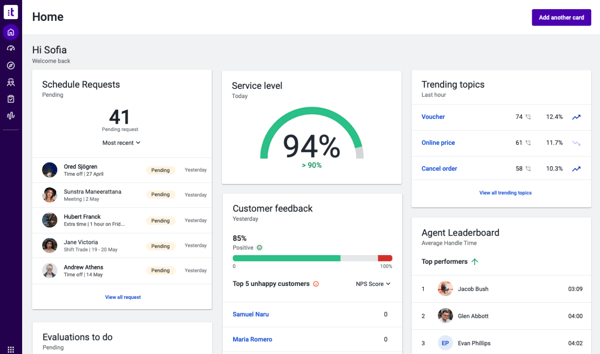
That said, I’ve noticed some concerns around service stability that users frequently mention. While not a constant issue, there are occasional instances of call lag, system crashes, or every line appearing busy when that’s not actually the case. These disruptions can be frustrating, especially during peak hours, and seem to interfere with smooth operations.
From what users have shared, there are also technical inconsistencies during calls that impact the experience. Basic functions like pausing call recordings or transferring a customer without putting them on hold don’t always work as expected. Minor interface glitches can add to the friction, even if they don’t completely derail the interaction.
Another common point of feedback revolves around random logouts and missed call notifications. Users report being unexpectedly logged out of the system or missing calls that never rang properly despite agents being available. While these issues aren’t necessarily deal-breakers, they can disrupt workflow and create avoidable inefficiencies.
“Since implementing Talkdesk, our team at JK Moving Services has experienced a remarkable shift in how we handle customer interactions. The platform has streamlined our communication process, allowing us to provide faster, more efficient service to our clients. The intuitive interface and seamless integration with our CRM make it easy for my colleagues and me to track, manage, and follow up with customers, leading to better engagement and higher satisfaction rates.”
- Talkdesk Review, Natalie H.
“Not very often, but yeah, at times I face lag in service providers, maybe this is because of ample requests going on, on which providers are busy solving and managing problems, but I really wish this should also be solved.”
- Talkdesk Review, Priyanka A.
Related: Explore the tips and techniques for effective cold calling.
JustCall helps streamline high-volume call management in a way that really benefits sales and support teams. Users frequently mention how it eliminates the hassle of manual dialing, allowing agents to focus more on conversations rather than spending time punching in numbers.
I’ve noticed that one of the most appreciated aspects is JustCall’s CRM integration. Calls and customer details sync automatically with platforms like HubSpot, Salesforce, and Zoho, which saves a lot of time and reduces manual work. This seamless syncing helps teams keep track of past interactions without needing to jump between tools or manually log every call.
Users also highlight the call quality and connection speed as standout strengths. Unlike other tools where call drops and poor audio are common frustrations, JustCall seems to deliver consistently clear sound and fast connection times. Whether using manual dialing or the power dialer, teams seem confident they can keep conversations flowing smoothly without technical interruptions.
Another area where JustCall gets high marks is customer support. I’ve seen multiple reviews praising the quick response times and the team’s willingness to solve issues directly rather than pointing users to generic help docs. That kind of support presence appears to give users peace of mind, knowing they won’t be left hanging when problems arise.
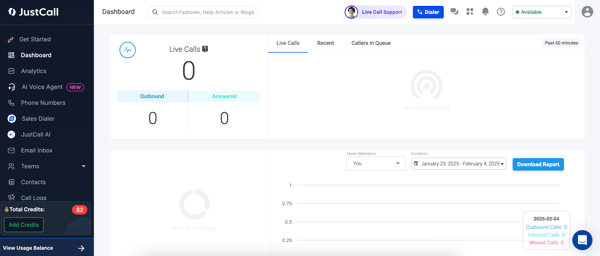
That said, I’ve noticed that CRM integration isn’t always seamless. While JustCall supports a wide range of platforms, users report occasional issues with call logs not syncing in real time or specific data fields not transferring correctly. It’s not a deal-breaking problem, but it often requires manual intervention or extra double-checking to ensure accuracy.
Another area where users see room for improvement is the application programming interface (API) functionality. JustCall does offer an API, but it appears to be somewhat limited for those looking to build custom workflows or deeper integrations. From what I’ve gathered, more flexibility here would allow teams to automate tasks more effectively and avoid having to work around system constraints.
I’ve also come across feedback on the account management and settings interface. Making certain adjustments—like updating user permissions or tweaking configurations—can feel unintuitive. Users seem to prefer having more control over these changes without needing to reach out to support for every small update.
“We have had just a heckin' rough time getting our telephony in Salesforce sorted out. JustCall is the one that actually allows us to review the sales team's calls with ease and speed. The transcription feature is genuinely useful. It was pretty painless, at least at a basic functionality level. Customer support is genuinely helpful, though it can take a minute to reach them. But they've never failed to resolve my issues.”
- JustCall Review, Jonathan Killstring H.
“I wish that the transcription of calls were easier to view from the call filtering page. Right now, you have to open a tab, then download the call, and open it in a separate window if you want to view the transcription. In CallRail, you can immediately view transcriptions of each call when highlighting individual calls, which would be much more convenient. Also, it would be nice to see customization options for Incoming Calls, call flows to record a voice for menu options, and give the Incoming Callers a Dial-by-number menu that leads to different recordings and routes to different Users/Phone numbers.”
- JustCall Review, Matt Z.
Related: Looking to boost success with automatic dialing in sales teams? Check out these 12 high-converting sales call script examples.
Nooks position itself as more than just a power dialer — it’s designed as a full sales engagement platform that blends automation with real-time insights. Unlike many dialers that focus only on speed, Nooks seems to understand the broader needs of sales teams, especially regarding coaching and performance tracking.
One feature users really seem to appreciate is the AI coaching assistant. It generates realistic practice sessions based on actual prospect interactions, allowing reps to refine pitches, tackle objections, and simulate scenarios tailored to different buyer personas. For teams looking to sharpen skills without risking live leads, this functionality looks like a major asset.
I’ve also noticed strong feedback around Nooks’ call analytics and insights. These go well beyond standard call logging, capturing data like talk ratios, engagement patterns, and script performance. Teams appear to be using these insights to optimize sales conversations and improve conversion rates over time.
Another area where Nooks earns praise is the ease of setup and workflow automation. The platform has a clean, minimal interface, automates follow-ups and call queues, and integrates smoothly with CRMs. Users often highlight how quickly they can get started, without needing extensive onboarding or troubleshooting.
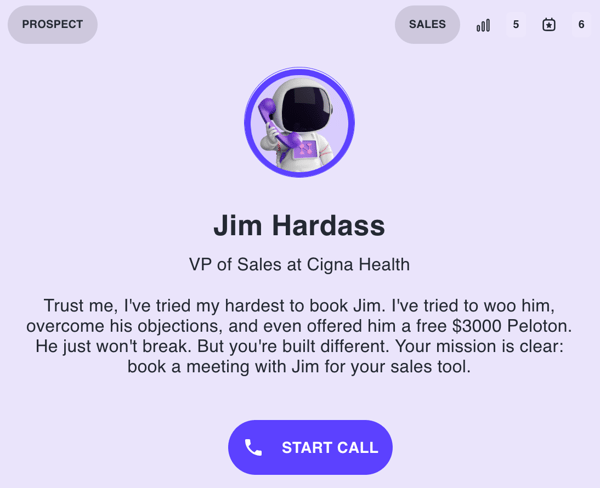
That said, some users point out that answering machine detection can be inconsistent. Nooks occasionally mistake voicemail greetings for live conversations, which leads to wasted dials. While this issue isn’t unique to Nooks, it’s something teams still need to watch for and manage manually.
I’ve also seen occasional mentions of system stability concerns. While overall performance is reliable, intermittent bugs—such as dropped calls or delays in syncing with CRMs—are reported that can disrupt workflows if not addressed quickly.
Finally, users seem to feel that customization options are somewhat limited. While the platform covers core sales functions well, it lacks more advanced settings for teams looking to build highly tailored workflows or implement complex automation sequences.
“It is such an incredibly intuitive platform - between the ability to filter out office hours to the summary of conversations for coaching, using Nooks has meant calling has gone from taking hours in the day to maybe 1/2 hours max. It's an amazing way to collaborate with teammates and learn from one another on an interactive floor. It was extremely easy to enroll & link with our CRM - which meant daily tasks were actually done on the day itself. I can definitely see this being my go-to tool of choice every day in 2025.”
- Nooks Review, Ruth C.
“Occasionally, the connection time is longer than ideal. However, I understand this is a metric the Nooks team always tries to reduce. If the AI notes could populate from callbacks and the one-off dialer, it would be very helpful, rather than just the autodialer.”
- Nooks Review, James D.
Related: We've got autodialers for outbound sales, but what about queries that come to you? Explore the 7 best live chat software so you can quickly respond to customers before they lose interest.
FlashIntel is designed to support teams trying to scale outbound outreach and zero in on high-intent leads. It offers a solid mix of automation and targeting tools that help sales reps move faster and waste less time.
I’ve noticed that parallel dialing is one of the most talked-about features. Users mention it keeps the momentum going by dialing multiple contacts at once and only connecting when someone actually answers. It cuts down on dead time between calls, and with built-in call tracking and recordings, teams can quickly review what’s working in real conversations.
Another thing users really seem to value is the people database. It’s massive—over a billion contacts—and includes direct dials, verified emails, LinkedIn profiles, and company info. What stands out is the ability to filter based on real sales triggers like tech stack or buying intent. From what I’ve gathered, it helps teams avoid bad leads, although there are still occasional complaints about outdated numbers slipping through.
ICP targeting also comes up frequently. FlashIntel lets you define and refine your ideal customer profile with filters like job title, revenue, or industry. That level of precision seems to help reps focus their time on leads that are more likely to convert rather than casting a wide net.
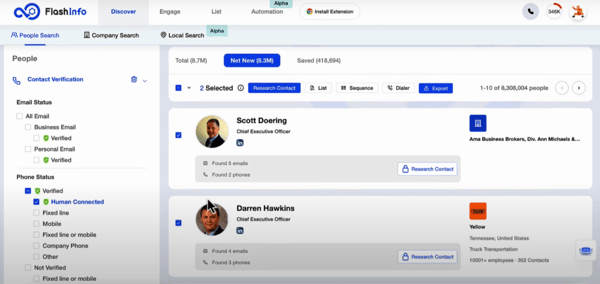
That said, I’ve seen some recurring concerns about contact accuracy—especially with phone numbers. Even with a strict verification process, a few users say they still run into disconnected lines or leads who’ve changed roles. It’s not a deal-breaker, but it definitely slows down productivity when dialing at scale.
I’ve also encountered feedback around the analytics dashboard. While it provides solid call tracking and engagement insights, some users feel it doesn’t go deep enough. If a team tries to analyze detailed trends or performance over time, they might find the reporting a little too high-level.
Finally, CRM integration isn’t always seamless. FlashIntel connects with major platforms, but a few users—especially those with custom-built CRMs—mention syncing issues or missing data fields. It sounds like it works better out-of-the-box with standard CRMs, but if you need more advanced or custom workflows, it might require extra setup or workarounds.
“It is easy to use, the overall implementation was just a quick log in and it is driven by AI that helps along the way. I use it daily to find prospective clients and engage with them on the same platform. We can easily integrate our CRM. And there is an AI-driven genie now that answers any questions we might have.”
- FlashIntel Review, Kelly J.
“There are many CRMs that are not easy to integrate with Flashinfo. This is something that needs to be worked upon.”
- FlashIntel Review, Liz T.
Kixie PowerCall & SMS is a standout feature that streamlines outbound calling by automatically queuing up contacts. Users seem to appreciate how this minimizes downtime between calls and helps maintain a smooth workflow. The dialing experience is described as seamless, and many reviewers mention the consistent call quality, with few complaints about dropped connections or technical hiccups.
I’ve noticed that SMS integration is another area where Kixie earns positive feedback. Users say texting doesn’t feel like an afterthought—it’s fully embedded within the platform. Being able to send and track SMS messages directly alongside calls makes it easier for reps to follow up with leads efficiently, whether they’re sending quick reminders or continuing conversations.
Regarding call tracking and analytics, users highlight the depth and usability of the insights provided. They frequently mention the ability to monitor call duration, voicemail drop effectiveness, and overall conversion rates. Managers especially value the live coaching features, noting that the ability to listen in and guide reps in real time has had a measurable impact on team performance.
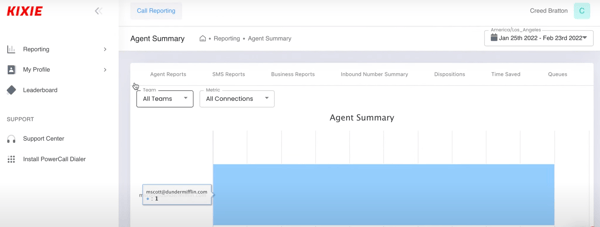
That said, no tool is without its challenges. From what I’ve seen, initial setup and onboarding can be a hurdle, particularly for users unfamiliar with Voice over Internet Protocol (VoIP) systems. There’s a noticeable learning curve when it comes to configuring call routing and automation workflows. Several reviewers mentioned they would have appreciated a more guided or intuitive onboarding experience to ease the transition.
I’ve noticed that while advanced automation features like lead prioritization and call sequencing are powerful, they aren’t always easy to master immediately. Users seem to find basic calling and SMS capabilities accessible, but getting the most out of these more complex tools often requires experimentation and a bit of trial and error.
Pricing is another area that comes up frequently in user reviews. Some small business users feel Kixie’s cost is on the higher side, especially when compared to simpler solutions. However, others point out that the platform’s robust features and time-saving capabilities make it a worthwhile investment, particularly for teams focused on scaling their outbound efforts.
“Kixie PowerCall & SMS has been a game-changer for our sales team. The auto-dialer and voicemail drop features have saved us so much time, and the seamless integration with our CRM keeps everything organized. I especially love the SMS automation—it makes follow-ups quick and effective. The platform is easy to use, and the call quality is always reliable. Highly recommend it to any team looking to boost productivity and streamline their communication!”
- Kixie PowerCall & SMS Review, Sara H.
“The Kixie PowerDialer has unfortunately fallen short in delivering a reliable and efficient experience for our team. We've faced constant crashes while attempting to upload call lists, an issue that has persisted for over two weeks. Additionally, login problems and frequent crashes during dialing have significantly disrupted our workflow. Instead of receiving timely support to address these issues, we've been met with short, unhelpful responses through the Jira ticketing system, rather than the option for a quick call to resolve our concerns. This level of service has been incredibly disappointing, leaving us frustrated and questioning the platform's reliability and commitment to customer satisfaction.”
- Kixie PowerCall & SMS Review, Tom B.
Orum's biggest advantage is its power dialing technology. Users talk about how it takes the pain out of navigating disconnected lines or unanswered calls. I’ve noticed that it really helps reps stay focused—since they don’t have to manually track each number or wait around for failed connections, they can put their energy into actual conversations. It seems like a huge time-saver and a boost for productivity.
I’ve also seen a lot of praise for Orum’s parallel dialer. Instead of calling one lead at a time and hoping someone picks up, reps can reach out to multiple prospects simultaneously. From what users say, this dramatically improves connection rates and helps teams maximize their outreach windows. It sounds like a game-changer for anyone doing high-volume outbound sales.
Another thing that stands out from the reviews I’ve read is Orum’s real-time call analytics. Users say the insights are detailed and actionable—they can track call outcomes, engagement trends, and connection rates without needing a separate reporting tool. I get the impression that sales managers really lean on this data to coach more effectively and fine-tune their team’s approach in real-time.
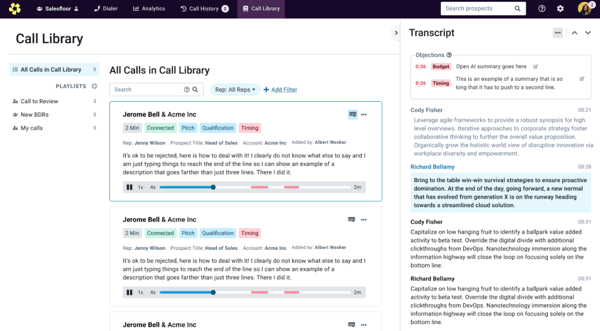
One of the biggest challenges I’ve encountered is limited integrations, especially with certain sales enablement and coaching tools. While Orum does work well with major CRMs, users mention that it doesn’t always support the platforms they rely on for engagement tracking or training. From what I’ve seen, this sometimes means exporting data manually or relying on third-party connectors, which can add extra steps to the workflow.
I’ve also noticed that the parallel dialer, while powerful, can be tricky to configure at first. Users say it definitely increases call volume, but managing multiple live calls at once takes practice. For reps who are newer to high-speed dialing, there’s a bit of a learning curve in balancing efficiency with focus—it seems to get easier over time but isn’t necessarily intuitive out of the gate.
From what I’ve read, there’s also some feedback about the initial setup process. Even though the platform is user-friendly once everything is in place, getting it fully optimized can take some time. Some users mentioned needing help from support or sales ops to get started, especially smaller teams without dedicated tech resources. It’s not a dealbreaker, but it’s something to plan for during onboarding.
“Orum has completely transformed how I handle outbound calling. The power dialing technology alone is incredibly efficient—I'm getting through my calls 40% faster than normal, and my connect rates are up due to boost connect. The parallel dialer is completely nuts, and I'm still evaluating the upper bands of just how good it is. Initial testing is yielding a 2.5x increase in efficiency, AT LEAST. I cannot recommend this tool enough. If you're making dials, then you need to get it.”
- Orum Review, Sam L.
“Orum doesn't have a double dial feature, which I think could be really useful. Before using Orum, I'd typically double-dial prospects, increasing their chance of picking up the phone. If they were to add this feature, I think they'd add a lot of value.”
- Orum Review, Zaak W.
I’ve spent much time exploring Genesys Cloud CX through user reviews and feedback, and I can see why so many customer support teams rely on it. From what I’ve gathered, it’s a strong fit for both traditional contact centers and businesses managing multichannel customer interactions. The platform seems to have earned a solid reputation for improving efficiency and agent performance across the board.
One of the most frequently praised capabilities is omnichannel communication. Users appreciate managing voice, chat, email, and social media conversations from a single interface. From what I’ve seen, having the entire customer interaction history unified across channels helps agents avoid repetitive questions and provide a more seamless experience—even when customers switch communication modes mid-conversation.
Another standout from what I’ve read is the platform’s cloud-based architecture. Users seem to love how scalable and accessible it is, especially compared to legacy systems that require on-premise setups. The fact that Genesys Cloud CX handles automatic updates and minimizes downtime makes it a strong option for remote teams. Plus, the reduced need for IT involvement is a recurring theme in reviews—businesses often point to it as a time- and cost-saving benefit.
I’ve also seen a lot of positive feedback around API access and customization. Teams with more complex integration needs, say, the platform offers a comprehensive set of APIs that allow them to connect with external CRMs, automate workflows, and build custom tools. This level of flexibility seems to be especially valuable for organizations looking to tailor their customer support experience to fit existing infrastructure.
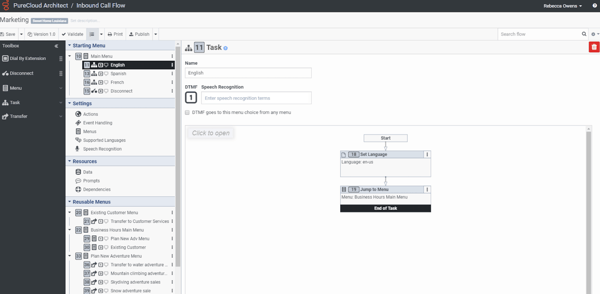
One hurdle I’ve encountered in user reviews is the platform’s reporting functionality. While Genesys Cloud CX does offer a solid set of prebuilt reports, users say customizing those reports to match specific key performance indicators (KPIs) can be limiting. From what I’ve seen, extracting granular insights isn’t always intuitive, and exporting data into different formats can feel a bit clunky—especially for teams that rely heavily on detailed analytics.
Another common theme is the learning curve for new users. Users appreciate the platform’s extensive capabilities, but many mention that the interface can initially be overwhelming. I’ve noticed that navigating the system isn’t always straightforward, and onboarding agents to use it efficiently takes time. It seems like the platform rewards familiarity but can be a challenge during the initial ramp-up.
I’ve also seen feedback around customization limitations. While Genesys Cloud CX offers some built-in flexibility, users note that certain workflows or interface tweaks require additional development work. In cases where teams want more advanced customization, they often need to rely on APIs or third-party tools to fill in the gaps. This might not be a dealbreaker for more tech-savvy teams, but it does add a layer of complexity.
“The experience with Genesys Cloud CX has been very positive. Initially, we had some doubts during the transition to the platform, but we later found that it effectively meets the typical demands of customer experience management with its innovation, reliability, and versatility. The implementation process was seamless; learning the new platform was straightforward, thanks to the excellent courses offered on the Beyond Learning platform by Genesys. Whenever we had concerns, questions, or suggestions, the Customer Support team was always available to assist us.
Now that we use the tool daily, what stands out the most to me is the seamless integration of multiple communication channels, including voice, email, asynchronous messaging, and social media. It is a feature-rich platform that continues to improve thanks to its developers. Overall, it has great potential to serve as an all-in-one resource.”
- Genesys Cloud CX Review, Arjay R.
“The reporting package in Genesys is very lacking by default. It wasn't until we were far into the project that we learned about A3S. This should be the default reporting package, not an add-on solution. A3S has all the features you'd expect from the base reporting platform for a major enterprise-sized contact center platform.”
- Genesys Cloud CX Review, Allen C.
No, but their use is strictly regulated under the TCPA and the TRACED Act. These laws set clear rules on automated dialing, requiring prior consent, restricting robocalls, and enforcing DNC list compliance. As long as businesses follow these regulations, autodialers are perfectly legal.
If you’re looking for a cloud-based auto dialer that eliminates on-premise setup and integrates smoothly with your workflow, there are several good options. Talkdesk offers AI-powered call routing and seamless CRM integration. Genesys Cloud CX is perfect for businesses that need omnichannel engagement and intelligent call analytics. JustCall is a solid choice for sales teams looking for a mix of voice, SMS, and automation. And for high-volume outbound sales, Orum delivers AI-driven transcription and real-time objection handling.
Small businesses need an autodialer that’s easy to set up, cost-effective, and works seamlessly with existing tools. JustCall is one of the best options for small teams, offering multi-channel communication, sales automation, and CRM integration without a steep learning curve. Talkdesk is another great choice for businesses with AI-powered call routing and a more advanced customer support experience.
Completely free auto dialers with advanced features are rare, but some platforms offer free trials or freemium plans. Most of the tools in this listicle provide a trial period, allowing you to test their auto-dialing capabilities before committing. However, a paid plan is essential if you need full-scale automated dialing, compliance tools, and CRM integrations.
If your focus is outbound lead generation or high-volume calling, Orum and FlashIntel offer excellent features for telemarketing. Orum uses AI to detect objections in real time, while FlashIntel’s contact filtering and sales triggers make it easy to prioritize high-intent prospects.
Call centers benefit from platforms that can scale, automate workflows, and handle compliance. Genesys Cloud CX excels for omnichannel customer support, while Orum and Talkdesk are great for high-volume outbound sales with AI coaching and CRM integration.
Based on G2 reviews and testing, Talkdesk, JustCall, and Kixie consistently score high for call connection rates, uptime, and CRM syncing. These platforms are great if reliability is a non-negotiable priority. For consultants needing reliable ICP insights, ZoomInfo and 6sense offer a strong blend of depth and usability.
B2B sales teams need auto dialers that prioritize CRM syncing, personalization, and pipeline visibility. FlashIntel supports ICP targeting and integrates with top CRMs, while Nooks offers AI-powered coaching and performance insights—both great for B2B workflows.
Let’s enhance outbound calling by making it smarter, faster, and more efficient! These auto dialer tools are designed to eliminate manual dialing, increase agent productivity, and easily connect with more leads. Whether you're looking for predictive dialing, AI-powered call routing, or seamless CRM integration, this list includes a solution that meets your needs.
When evaluating these tools, I focused on finding the right balance between automation, call quality, and workflow integration. The best auto dialer is not just about making more calls; it’s about making better calls with the right data at the right time.
I examined each tool in detail to see how effectively it streamlines outreach, and now it's your turn to do the same! Explore these platforms and select the one that will transform your outbound calling strategy.
No answer? No problem. Here’s how to leave a sales voicemail to get you a callback.
Harshita is a Content Marketing Specialist at G2. She holds a Master’s degree in Biotechnology and has worked in the sales and marketing sector for food tech and travel startups. Currently, she specializes in writing content for the ERP persona, covering topics like energy management, IP management, process ERP, and vendor management. In her free time, she can be found snuggled up with her pets, writing poetry, or in the middle of a Netflix binge.
If you work in any customer-facing department, you’re likely used to picking up the phone,...
 by Mary Clare Novak
by Mary Clare Novak
A call center lives and dies by its forecast.
 by Harshita Tewari
by Harshita Tewari
Have you ever felt understaffed or resource inefficient when a huge influx of customer queries...
.png) by Shreya Mattoo
by Shreya Mattoo
If you work in any customer-facing department, you’re likely used to picking up the phone,...
 by Mary Clare Novak
by Mary Clare Novak
A call center lives and dies by its forecast.
 by Harshita Tewari
by Harshita Tewari


